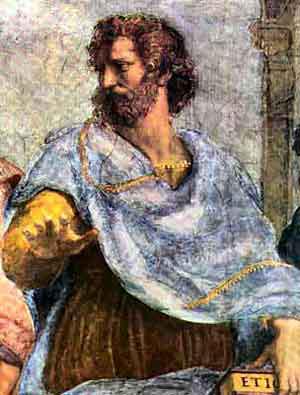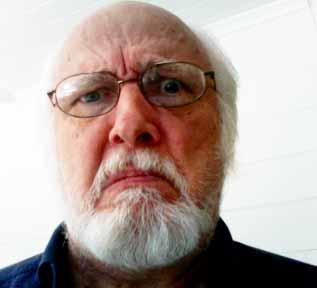 Sen's vision of well-being is a point of departure for further discussion of electrate consulting. His vocabulary evokes the tradition of phronesis (prudence) initiated in Aristotle's ethics, a tradition of metaphysics serving as a relay for our larger project of apparatus invention. Appiphany is not the delivery of prudence (good judgment) but an inquiry and invention project asking, what may prudence be, today? The description of Aristotle's ethics (and metaphysics) is a relay for invention, not a final recommendation.
Sen's vision of well-being is a point of departure for further discussion of electrate consulting. His vocabulary evokes the tradition of phronesis (prudence) initiated in Aristotle's ethics, a tradition of metaphysics serving as a relay for our larger project of apparatus invention. Appiphany is not the delivery of prudence (good judgment) but an inquiry and invention project asking, what may prudence be, today? The description of Aristotle's ethics (and metaphysics) is a relay for invention, not a final recommendation.
1. The egent encounters a situation, for example, the scene of the Superfund site in Gainesville, Florida (this is our prototype). The disciplinary baggage associated with "metaphysics" should not distract us from using that framing to focus on what is at stake in this encounter: what is real (ontology); how do we know (epistemology); what action should we take (ethics, politics). Sen's emphasis on choice, preference, values, goals, capacity, place his vision of justice fully within metaphysics. The phronimos exercises phronetic perception, meaning that s/he must recognize (spontaneously) the nature of the situation, draw upon past experience and disposition, to decide what action will bring about the best outcome for community. In American mythology the phronimos too often is imagined to be "the right man with a gun." Alternatively, "everyone a phronimos" is the goal of Appiphany.
The initial encounter is in part aesthetic (even if judgment ultimately draws upon all one's faculties in concert). Political and ethical decision concerns contingent circumstances, not necessities, since human choice (prohairesis) is involved, so that things may be otherwise than we find them. Capacity is synonymous with virtue, power, terms that bring us to one of the points of invention in the tradition. The sensorium is our embodied interface with the environment. Each sense is a capacity, a potential for experience according to the purpose of the organ -- the eye to see, the ear to hear, the brain to think. There must be both hearkening and sounding, the commentators note. The organ possesses the potential (dunamis) for experience, but it must be exercised or actualized (energeia), in an interaction between inner and outer worlds. The importance of choice is noted here, relative to the presence or absence of capacity -- its actualization or its privation (steresis).
2. The fundamental action of ontology is just the encounter in which the egent recognizes an entity in the world. There is a tree (to use the classical example). The intuitive power of intellect (nous) recognizes this being, and performs the gesture of indication, pointing, saying "this such" (tode ti). All of metaphysics, we are told, is condensed in this event of encounter and statement: "there is this tree" ("this is a tree"). Poets begin in metaphysics also, but move beyond the concern with substance to linger over the accidents, the qualities of the tree, its individuality as such. The singularity of an entity remains outside this event, other, unknowable, but appropriated into knowledge, however distorted within conceptual categories, as both individual (one) and particular (many).
What is named (substance) is life, energy, with substance constituting a compound intellectually apprehended as matter (potential, dunamis) and form (actual, energeia). Aristotle's prototype for ousia (substance) was the living organism, such as a tree, with substance being not a present thing (as proposed in the Categories), but a process of passage or temporal movement. "Entelechy" is Aristotle's neologism to name this being-at-work-remaining-the-same -- his solution to Plato's aporia regarding how the eternal universal real (form) interacted with perishable changing materiality. Plato's solution was chora (space of generation), that Aristotle made immanent as principle of generation within the individual entity. Beings become what they already are (in the manner of a seed becoming a tree). The insight from the example of human generation (also one of Plato's metaphors for chora) was that matter (woman, womb, mother) is an active partner with man (semen). This figure is an opportunity for invention.
3. The epistemological dimension of Aristotle's account concerns the natural capacity of humans for reason, with reasoning being itself a kind of movement. Aristotle observed a correspondence aligning the organization of nature as substance and accidents (things with properties), language with its grammatical structure of subject and predicate, nouns and adjectives, paronymy, declarative propositions, and mind or thought with its rational powers of logic. Form is a nonsensuous reality, whose operations Aristotle codified in his logical square, tracking the interactions of presence and deprivation through the relations of contraries, contradictions, and complements (the series of oppositions). Form realized in matter produces substance. This nature is accessed and manipulated in writing (philosophy) through a deep unity, the idea (eidos, shape). This system of correspondences is also an opportunity for invention.
The world is intelligible, it shows itself or shines forth, such that humans feel themselves addressed. This intelligibility is the clue to happiness, in that what is most proper to humans is this power of reason. A crucial point in understanding well-being is that what motivates actualization of virtues is an object cause of desire, that Aristotle identifies as an unmoved mover, a universal final cause that was addressed through theology (God as prime mover). The experience of contemplating by means of reason the work (ergon) of nature (reality) Aristotle called "eudaimonia," which is translated as "happiness," which is confusing, since what he means is closer to what the psychologist of creativity, Mihaly Csikszentmihalyi, called "flow" -- the pleasure associated with working in a state of complete absorption. Life works. Aristotle thus declares that the good life, the best activity, is a life of study, especially study for its own sake.
Hans Blumenberg, in his critique of secularization, makes the point that Christian Theology appropriated for its own vision of perfect happiness the eudaimonia from Greek philosophy, modifying it as contemplation of God. Part of Blumenberg's point is that new paradigms do not so much replace a previous paradigm as reoccupy the old questions, in order to supply new answers. Modernity does not eliminate Medieval theology by secularization, but reoccupies its questions. This insight explains the value of Agamben today.
See Christopher P. Long, The Ethics of Ontology: Rethinking an Aristotelian Legacy, SUNY 2004.

